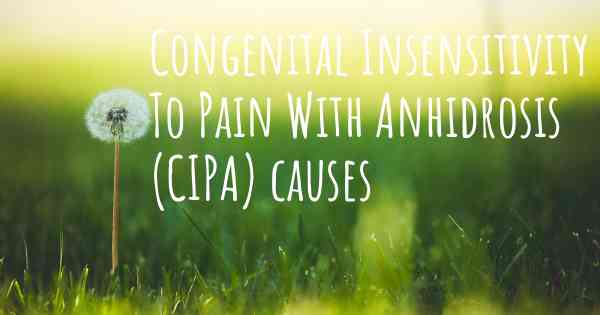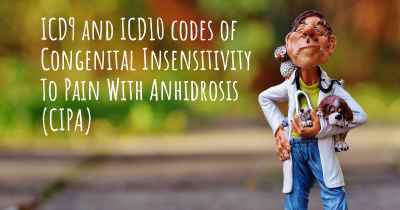Which are the causes of Congenital Insensitivity To Pain With Anhidrosis (CIPA)?
See some of the causes of Congenital Insensitivity To Pain With Anhidrosis (CIPA) according to people who have experience in Congenital Insensitivity To Pain With Anhidrosis (CIPA)

Congenital Insensitivity to Pain with Anhidrosis (CIPA), also known as hereditary sensory and autonomic neuropathy type IV (HSAN IV), is a rare genetic disorder that affects the nervous system. It is characterized by the inability to feel pain, inability to sweat, and various other neurological abnormalities.
The primary cause of CIPA is a mutation in the NTRK1 gene, which provides instructions for making a protein called tropomyosin receptor kinase A (TrkA). TrkA is essential for the development and survival of nerve cells that transmit pain, temperature, and touch sensations. Mutations in the NTRK1 gene disrupt the normal functioning of TrkA, leading to the symptoms associated with CIPA.
CIPA is inherited in an autosomal recessive pattern, which means that an affected individual must inherit two copies of the mutated gene (one from each parent) to develop the disorder. If both parents are carriers of the mutated gene, each of their children has a 25% chance of inheriting CIPA.
Some common symptoms of CIPA include:
- Lack of pain sensation: Individuals with CIPA cannot feel pain, which can lead to injuries, burns, and fractures without their knowledge. This lack of pain perception can be life-threatening if not managed properly.
- Anhidrosis: CIPA patients have an inability to sweat, which impairs their body's ability to regulate temperature. This can result in recurrent fevers, heatstroke, and other heat-related complications.
- Neurological abnormalities: CIPA can cause various neurological issues, including developmental delays, intellectual disabilities, and speech difficulties.
- Oral and dental problems: Due to the inability to feel pain, CIPA patients may experience severe dental issues, such as tooth decay, gum infections, and oral injuries.
- Joint and bone abnormalities: The lack of pain sensation can lead to joint deformities and bone abnormalities, as injuries go unnoticed and untreated.
There is currently no cure for CIPA. Treatment mainly focuses on managing symptoms and preventing complications. This may involve regular monitoring of body temperature, providing protective measures to prevent injuries, and addressing any associated medical conditions.
In conclusion, CIPA is caused by a mutation in the NTRK1 gene, which disrupts the normal functioning of TrkA protein. This genetic disorder leads to the inability to feel pain, lack of sweating, and various other neurological abnormalities. CIPA is inherited in an autosomal recessive pattern, and there is no known cure for the condition.








